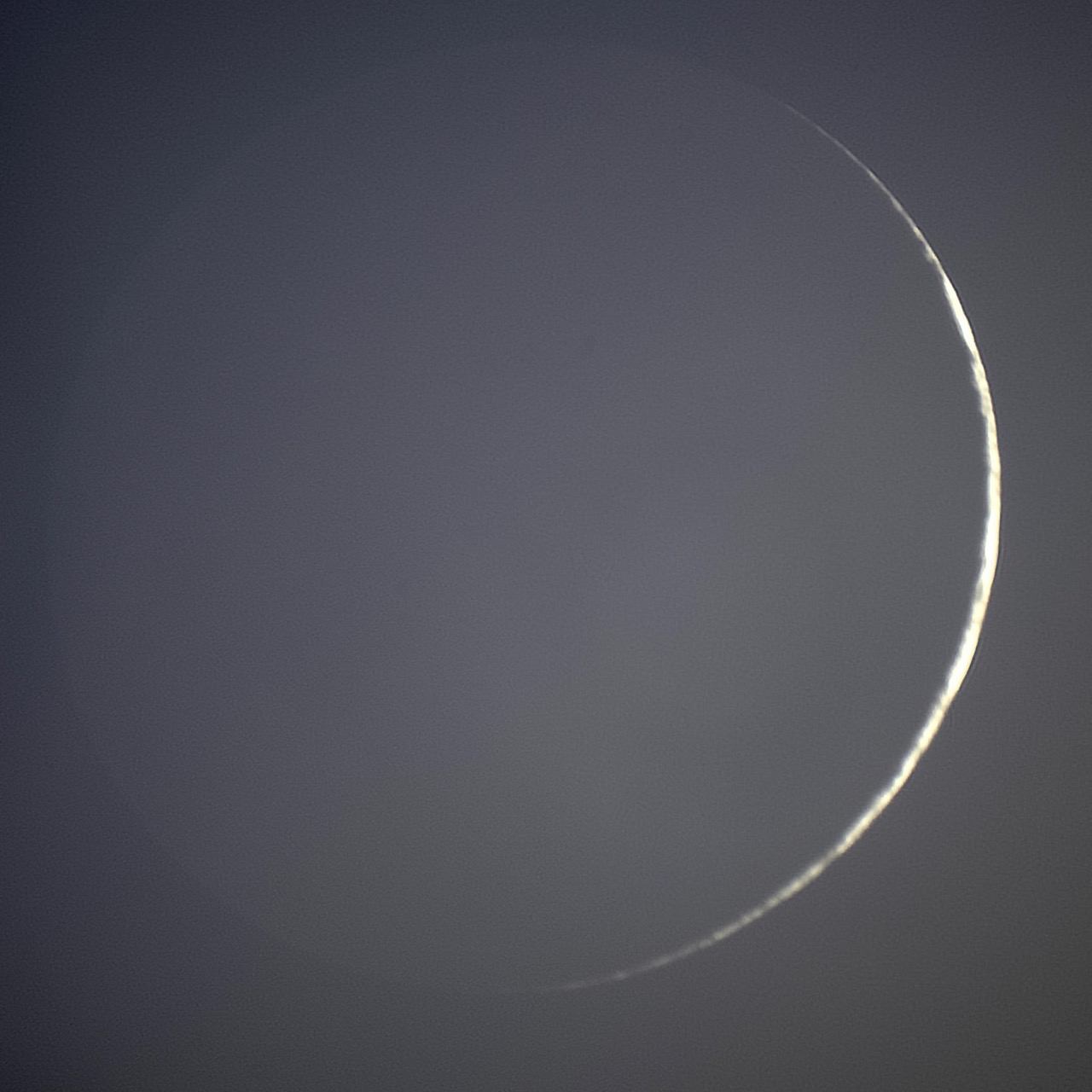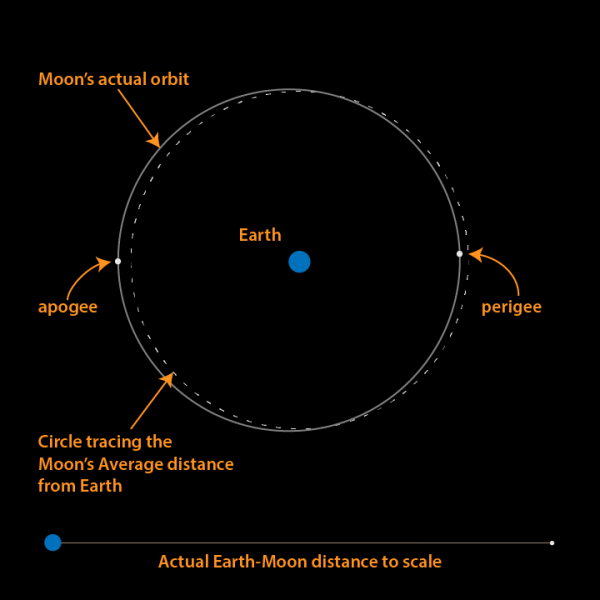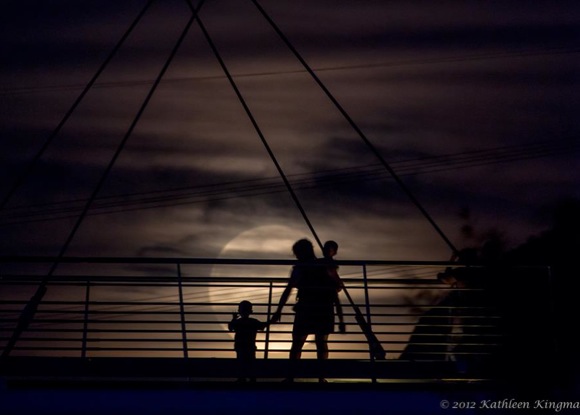
Today – April 26, 2017 – presents the first of four supermoons in 2017. What, you say? Supermoon? But the moon isn’t anywhere near full on April 26! That’s right. This isn’t a full supermoon. Rather, it’s a new supermoon. In fact, the new moons on April 26, May 25 and June 24 all qualify as supermoons, with the May 25 new moon counting as the “most super” of the bunch. Follow the links below to learn more about the supermoons of 2017.
What time is the April 26 new moon? How close to perigee?
Larger-than-usual tides accompany April 2017’s supermoon.
Can I see the April 26 supermoon?
What is the closest supermoon of 2017?
Farthest full moon of 2017 on June 9

What is a supermoon? The term supermoon didn’t come from astronomy. We used to call these moons perigee new moons or perigee full moons. Perigee means near Earth. An astrologer, Richard Nolle, is credited with coining the term supermoon. He defines a supermoon as:
. . . a new or full moon which occurs with the moon at or near (within 90% of) its closest approach to Earth.
By this definition, a new moon or full moon has to come within 225,027 miles (362,146 km) of our planet, as measured from the centers of the moon and Earth, in order to be a supermoon.
That’s a very generous definition, and it’s why supermoons are common. According to Nolle’s definition, the year 2017 gives us a total of four supermoons: the new moons of April, May and June, and the full moon of December. After that, the following full moons on January 2 and 31, 2018, count as supermoons, too. Additionally, some will call the full moon on January 31, 2018 a Blue Moon.

What time is the April 26 new moon? How close to perigee? The April 2017 moon is new on April 26 at 12:16 UTC (translate UTC to your time zone). Lunar perigee – the moon’s nearest point to Earth for the month – happens about 1 day and 4 hours after new moon, on April 27, at 16:18 UTC.
The May new moon will more closely coincide with lunar perigee, to present the closest supermoon of the year. The May 2017 moon will be new on May 25 at 19:44 UTC, and lunar perigee will occur a little over 5 and 1/2 hours later, on May 26 at 1:23 UTC.
The June 2017 new moon will come on June 24 at 2:31 UTC, or nearly 16 hours after reaching lunar perigee (June 23 at 10:49 UTC).

Higher-than-usual tides accompany April 2017’s supermoon. Will the tides be larger than usual at the April, May and June new moons? Yes, all new moons (and full moons) combine with the sun to create larger-than-usual tides – called spring tides – but perigee new moons (or perigee full moons) elevate the tides even more.
Each month, on the day of the new moon, the Earth, moon and sun are aligned, with the moon in between. This line-up creates the wide-ranging spring tides. High spring tides climb up especially high, and on the same day low tides plunge especially low.
An extra-close new moon accentuates the spring tide all the more, giving rise to what’s called a perigean spring tide. If you live along an ocean coastline, watch for high tides caused by the April, May and June 2017 new moons – or supermoons.
Will these high tides cause flooding? Probably not, unless a strong weather system accompanies the perigean spring tide. Still, keep an eye on the weather, because storms do have a large potential to accentuate perigean spring tides.
Learn more: Tides and the pull of the moon and sun
Can I see the April 26 supermoon? Don’t expect to see the new moon on April 26. At the vicinity of new moon, the moon generally hides in the glare of the sun all day long, pretty much rising with the sun at sunrise and setting with the sun at sunset. On the other hand, if you were on the moon looking at Earth, you’d see a full Earth. However, you might be able to catch a young moon after sunset on April 27.

What is the closest supermoon of 2017? As we said above, the year 2017 will have four supermoons: the new moons of April, May and June, and the full moon of December.
The new moon on May 25 presents the closest supermoon of the year (357,265 kilometers or 221,994 miles). This is the first time since the year 2009 that the closest supermoon is a new moon (instead of a full moon) and the first time since 2009 that the closest supermoon is more than 357,000 km distant.
Farthest full moon of 2017 on June 9. One fortnight (approximately two weeks) after the year’s nearest new moon on May 25, it’ll be the year’s farthest and smallest full moon on June 9, 2017. People are calling this sort of moon a micro-moon.
Bottom line: The first supermoon of 2017 comes when the moon turns new on April 26, 2017! No, you won’t see this moon, because the new moon hides in the glare of the sun, but you might discern the higher-than-usual tides along the ocean shorelines.











